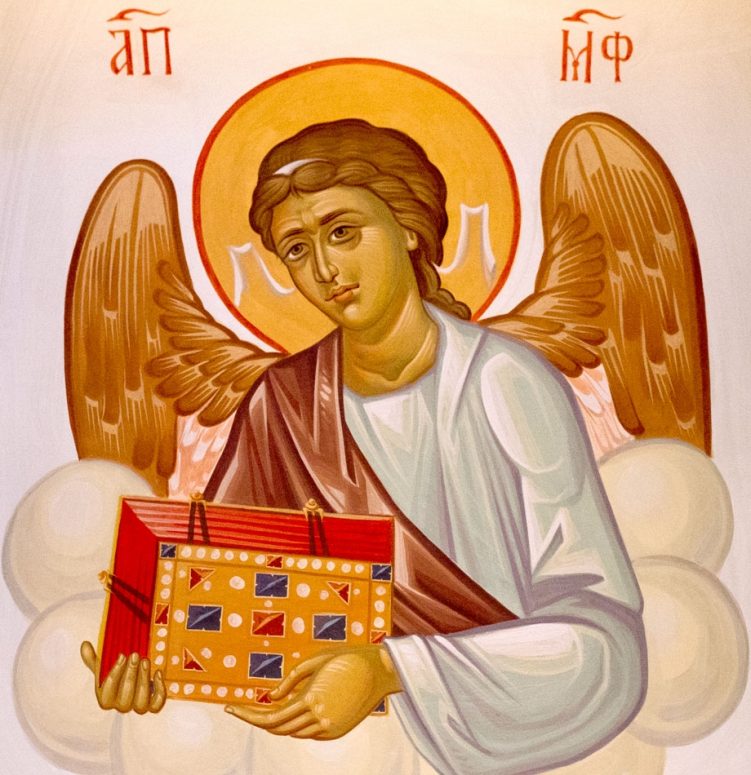
Though more likely to appear in the Western art, any experience of Christian iconography will present us at one time or another with the image of some odd, winged creatures, with the heads and features of animals. Usually on Gospel Books, though sometimes in the architecture of church buildings, the appearance of such fantastical creatures might seem bewildering to those who are new to the Christian Faith. Yet these angel-winged creatures – collectively called the Tetramorph – are found in the Old and New Testaments of the Bible, and their symbolism explains their presence on the binding of Gospel Books.
It is the Prophet Ezekiel, exiled along with the Israelites in the 6th century B.C, who first reveals to us the vision of the four angelic beings. In a vision, and coming from amidst the flames, Ezikiel relates:
As for the likeness of their faces, they four had the face of a man, and the face of a lion, on the right side: and they four had the face of an ox on the left side; they four also had the face of an eagle. (Ezekiel 1:10)

This image is again seen by St. John the Apostle in the Book of Revelation, where the Tetramorph surround the Enthroned Christ: And the first beast was like a lion, and the second beast like a calf, and the third beast had a face as a man, and the fourth beast was like a flying eagle. (Revelation 4:7)
It is this setting shown in the picture at the top of this post, and the most common depiction of the four creatures in Christian artwork.
As to why the Tetramorph appears on Gospel Books, this is because of the identification of the four creatures as symbols for the Four Evangelists:




The symbolism of representing the Four Evangelists as the Four Winged Creatures has developed over time, so that by the High Middle Ages it was extremely common to find these symbols in the West. It would also be common to see the Evangelists depicted as humans, but flanked by “their creature”. Although this symbolism dates from the First millennium A.D., and so certainly belongs to the Tradition of the Orthodox Church, it is also true that the symbolism is used less frequently in the East.
It is also important to say such symbolism is very rare in Orthodox Icons. As Icons are not merely examples of “Christian Art”, but are images which are venerated and honored, this distinction should be emphasized. Although the Tetramorph is a beautiful way in which to decorate Christian manuscripts or the edifices of churches, our Orthodox forefathers have not seen it fit to put these creatures in images which are venerated. Or, at least, not put into icons of the Evangelists which are venerated.



